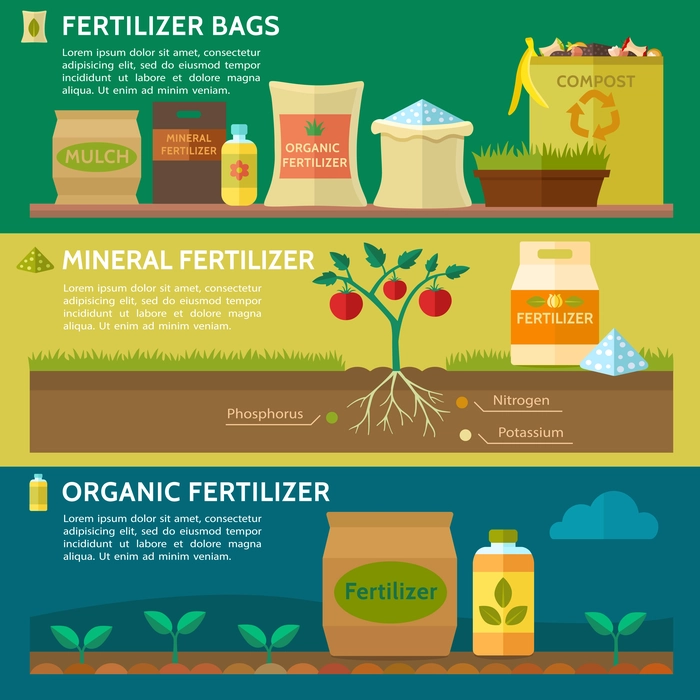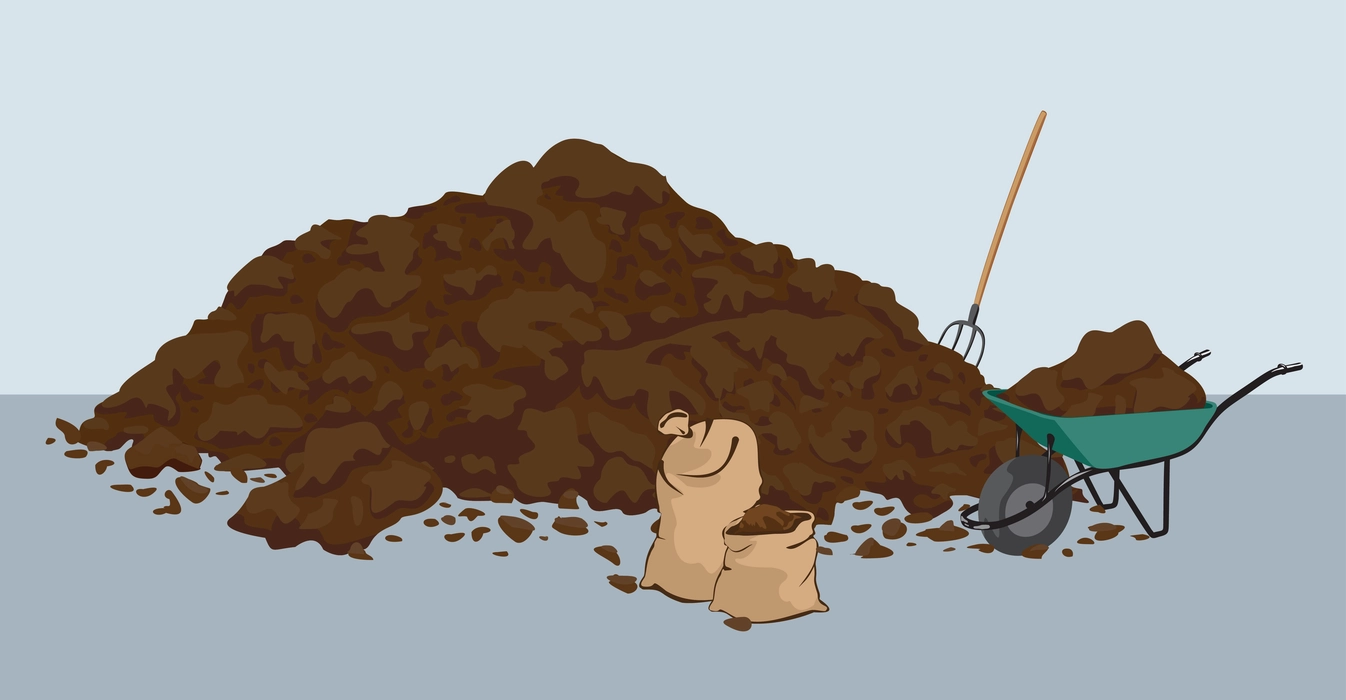Introduction
Food security is currently a big issue due to the growing global population. As a result, fertilizer has become crucial to agriculture to feed the world’s expanding population. Fertilizers are substances that aid in providing nutrients to the soil, enhancing crop yield. Additionally, it aids in preserving and enhancing soil fertility. Inorganic, organic, and biofertilizers all work in somewhat different ways to release nutrients into the soil and each has advantages and disadvantages in terms of crop growth and soil fertility.
What are Fertilizers?
Fertilizers are nutrient-rich compounds that are put into the soil to boost soil fertility, which, if added to the needed amount of soil, results in better and higher yields. Urea hydrolysis is a basic illustration of how fertilizer is applied into the soil.
\[{\bf{CO}}{({\bf{N}}{{\bf{H}}_2})_2}\; + \;{\rm{ }}\;{{\bf{H}}_2}{\bf{O}}\;{\rm{ }}\; + \;{\rm{ }}{\bf{Urease}}\;\;{\bf{2N}}{{\bf{H}}_3}\; + \;{\bf{C}}{{\bf{O}}_2}\]
Here, the most popular fertilizer, urea, or \(CO{\left( {N{H_2}} \right)_2}\), reacts with urease, a naturally occurring chemical produced by the soil, when it is applied to moist soil. It causes the synthesis of \({\bf{N}}{{\bf{H}}_3}\;{\bf{and}}{\rm{ }}{\bf{C}}{{\bf{O}}_2}\), both of which promote soil fertility and plant development. The three essential macronutrients that plants require in the greatest amounts are Nitrogen (N), Phosphorus (P), and Potash (K). Sulphur (S), Calcium (Ca), and Magnesium (Mg) are additional macronutrients that plants also require, but in smaller amounts.
Types of Fertilizers
Fertilizer is categorized into the following groups according to the composite makeup and various techniques of releasing nutrients:

- Inorganic fertilizers: Inorganic fertilizers are mostly made of chemical compounds like urea, ammonium nitrate, potassium chloride, etc. These fertilizers can’t decompose naturally. These fertilizers are often known as synthetic or artificial fertilizers. It is subdivided into two categories:
- Macronutrients Fertilizers: Primary macronutrients that are rich in Nitrogen,Phosphorous, and Potassium are crucial for any plant’s rapid and healthy growth. Secondary macronutrients, which are similarly important to plants and contain calcium, sulfur, and magnesium, constitute another category.
- Micronutrients Fertilizers: These fertilizers are designed to give trace amounts of nutrients like Copper, Zinc, Boron, Iron, and Chlorine, among others, even though they have a limited purpose in meeting the basic demands of plants.
- Organic Fertilizers: These easily biodegradable fertilizers are made from naturally occurring materials like sewage, guano, slurry, manure, worm castings, etc. Then, a vast number of microorganisms work to break down these naturally occurring substances into smaller and soluble particles.

- Bio-Fertilizers: Biofertilizers are compounds that generate nutrients from microorganisms that solubilize nitrogen and phosphate. Examples include Pseudomonas, Azotobacter, etc. These microorganisms or bacteria improve the soil’s nutritional content.
Application of fertilizers
- It aids in increasing crop yield and replenishing the soil’s depleted nutrients.
- The ability of nitrogen in fertilizers to make soils acidic is lessened.
- To grow healthy crops, nitrogen-based fertilizers should be applied as much as possible.
- Chemical fertilizers can be used in smaller amounts while yet providing the soil with enough nutrients to produce a larger yield.
- Where two crops are growing, using biofertilizers greatly aids in preventing the production of undesirable crops. They are used to cultivate a variety of crops.
Benefits of Fertilizers
| Inorganic fertilizers (Chemical Fertilizers) | Organic Fertilizers | Biofertilizers |
| It is simpler to use and handle. | Helpful in bringing soil nutrients to the surface and ensuring that they are delivered to plants in an even distribution. | It guarantees soil enrichment. |
| It easily dissolves in soil and has an immediate impact on crops since they contain soluble salts. | Keeping the moisture constant, it helps to relieve soil stress. | These fertilizers contain microorganisms that break down complicated organic compounds into simpler, nutrient-rich forms that plants may easily access. |
| These fertilizers are extremely productive, even if they are only used in modest quantities. | It is environmentally friendly. | Through processes like nitrogen fixation and phosphorus solubilization, it naturally raises the nitrogen and phosphorus content in the soil, making it more nutrient-rich. |
| By allowing water to penetrate the soil, fertilizers like gypsum help crops develop healthily. | On plants, it has a less harmful effect. | These fertilizers provide hormones like amino acids, vitamins, etc. that promote plant root growth. |
| Utilizing fertilizers like lime, which lessen the impact of acid on the soil, aids in preserving the soil’s pH equilibrium. | These fertilizers are a rich source of soil bacteria, which in turn aid in growing a healthy crop and ward against pest attacks. |
List of Chemical Fertilizers
| Nitrogenous Fertilizers | Phosphatic Fertilizers | Potassic Fertilizers |
| UreaAmmonium sulphate Ammonium nitrateSodium citrate Potassium nitrateCalcium ammonium nitrate | Rock phosphatePhosphoric acidSuper phosphatesDiammonium phosphate | Muriate of potashSulphate of potash Potassium metaphosphate Potassium nitrate |
Summary
Fertilizers are nutrient-rich compounds that are put into the soil to boost soil fertility, which, if added to the needed amount of soil, results in better and higher yields. Fertilizer is categorized into the following groups according to the composite makeup and various techniques of releasing nutrients: chemical, organic, and biofertilizers. To grow healthy crops, nitrogen-based fertilizers should be applied as much as possible.
Frequently Asked Questions
1. How crucial is fertilizer to feeding the world’s population?
Ans. Fertilizers have nutrient-rich components, and adding them to the soil makes the soil more fertile, which helps to enhance crop output. The rapidly rising agricultural yield aids in supplying the expanding population’s growing need for food.
2. Does incorporating organic fertilizer into the soil enhance crop quality and soil health?
Ans. Organic fertilizers are made from things like slurry, dung, seaweed, etc. Microorganisms transform these complicated compounds into simpler compounds. These more straightforward or nutrient-rich substances are readily absorbed in the soil, which aids in enhancing soil quality and raising crop yields.
3. Can fertilizers harm a person’s health?
Ans. Chemical fertilizers are among those that can have an impact on human health because they include heavy metals like lead, mercury, and others that can harm a person’s kidneys, liver, and lungs.
4. What kind of fertilizer is most used in agriculture, and why?
Ans. To feed a large population, food production must increase. Only fertilizers made of chemicals or inorganic materials could make this possible. The majority of chemical fertilizers are used to produce the highest yield. Given that it contains macronutrients and micronutrients, it provides the soil with a sufficient amount of nutrients to boost crop yield.
5. Why do plants burn when fertilizers are used excessively?
Ans. Salt-based nutrients are present in fertilizers. These salts readily dissolve in water; however, salts used in excess leave the water undissolved. Plants are unable to absorb water and other nutrients because of the undissolved salt that stays in the soil. As a result, it greatly disturbs the soil’s structure and causes plants to burn.
 Mission Statement
Mission Statement
“Empower every student to achieve full potential”
88Guru has been established with the social objective of making quality video-based learning material available to all Indian students. Technology, Connectivity and Social Media are rapidly changing the world of Education and we wish to lead the transformation of the tuition industry in India.
88Guru is the perfect complement to the current tuition model. 88Guru creates a wonderful opportunity for children and parents to bond while engaging in a valuable learning activity. It also provides the complete curriculum at your fingertips for those moments when you need some help at short notice. We believe that this mode of tuition could be transformational, adding hours to a child's day while providing complete control over the learning process.
Every course is taught by the best teachers from India's top schools and conducted in an engaging manner to keep students involved. The e-learning process consists of video-based instructions, computer-graded assignments, and a dashboard which allows the student and parent to track progress.


